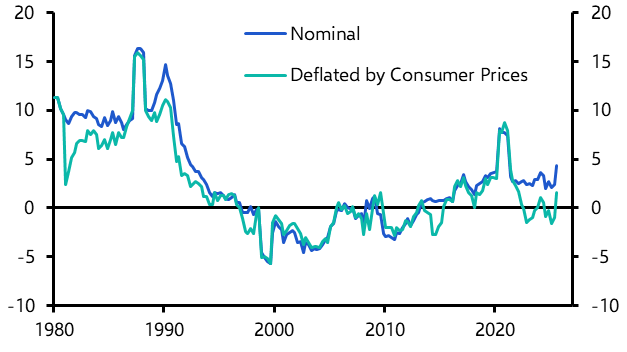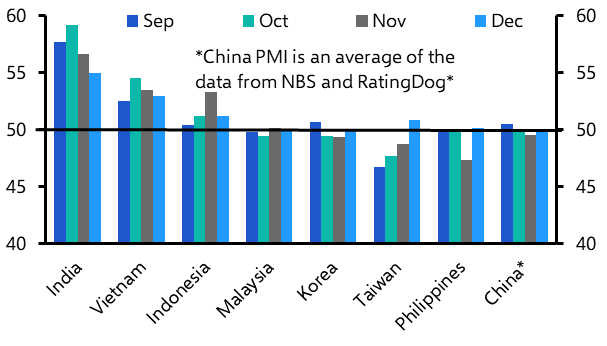Key differences with previous downturns may confound gloom about the long-term economic effects
The global economy has now suffered two “once-in-a-lifetime” shocks in the space of less than 15 years. However, the long-term consequences of the global financial crisis and the Covid-19 crisis are likely to be very different. The experience of 2008 taught us a lot, but not all of those lessons are likely to apply to the current set of circumstances.
We will explore the long-term consequences of the Covid crisis in a series of pieces over the coming months that will cover everything from the effect on consumer and business behaviours to the implications for the role of the state and the future of globalisation. We will also examine the long-term consequences for public and private balance sheets, monetary and fiscal policy, and inflation. All of these pieces will sit on a dedicated section of our website once they are published.
One way of framing the long-term consequences of the crisis from an overall macro perspective is to think about how long it might take economies to return to their pre-virus paths of GDP.
In many crises – including the 2008 global financial crisis – economies don’t return to their pre-crisis trend. Output becomes lodged below its previous path on a permanent basis. (See Chart 1.) Concerns are mounting that a similar fate lies in store for many economies this time too.
Chart 1: Illustrative paths of post-crisis GDP

There are three reasons why economies may not return to their pre-crisis paths of output.
The first is that the pre-crisis trend was simply unsustainable. In many cases, pre-crisis growth is boosted by factors that cannot last and very often end up sowing the seeds of the crisis itself (for example, excessive credit growth). As a result, the post-crisis trend is necessarily lower than the pre-crisis one.
The second factor is that crises can destroy supply potential. Capital is rendered obsolete and high and persistent levels of unemployment cause skills to atrophy. All of this reduces the capacity of the economy to produce goods and services and lowers the post-crisis growth path.
The final reason is that crises often result in a prolonged period of extremely weak demand, for example because households and businesses are forced to restrain spending to repair their balance sheets. This post-crisis state may in fact not be permanent and demand may ultimately return. But the period of adjustment or repair can last for long enough to give the impression of having reduced trend growth – and, indeed, it may actually do so insofar as persistent unemployment erodes skills, causing long-term scarring of the labour market.
All of these factors lowered the path of output following the global financial crisis: the pre-crisis trend was inflated by housing and credit market bubbles, and was never likely to be matched following the crisis; the crisis itself reduced the size of the financial sector, which, since it is a high productivity sector, reduced the supply potential of economies; and balance sheet repair in the wake of the crisis constrained demand and suppressed growth.
Viewed through the same lens, the Covid crisis looks rather different. For a start, potential growth in many developed and emerging economies had already fallen sharply before the crisis, thus lowering the bar in terms of a path back to “normality”. What’s more, although the crisis will shrink some sectors, these are generally lower productivity ones such as hospitality and leisure. And while some capital stock has been rendered obsolete (airlines, some office space and so on), the crisis is likely to spur investment in new areas, including digital technology.
This leaves the prospect of an extended period of demand weakness as the chief reason to be concerned about the effect of the virus on long-term growth. For now, the effect on demand is being mitigated by wide-scale fiscal support. Provide that this support remains in place until the virus has been brought under control, it’s possible that the long-term impact of the virus on aggregate GDP may be smaller than many currently assume.
Accordingly, while there are plenty of reasons to remain concerned about the near-term trajectory, so long as governments avoid policy missteps, some of the pessimism around the longer-term economic effects of the virus may be overdone.
In case you missed it:
- In their latest Global Markets Outlook, our markets team argues that the rally in risk assets has further to run.
- Our Senior China Economist, Julian Evans-Pritchard warns that that the Phase One trade deal is living on borrowed time.
- In the first in a series of pieces on the future of property after the pandemic, our team argues that a rise in remote working will hit income returns on office investments by more than 20%.




